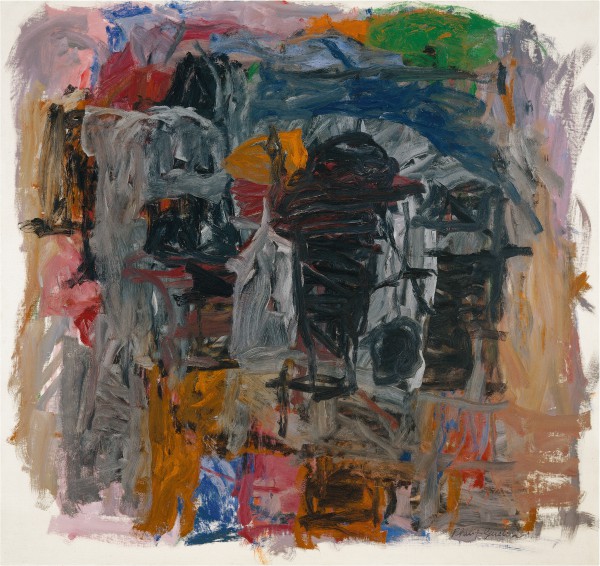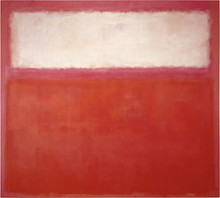Philip Guston
The Tale 1961

©The Estate of Philip Guston, courtesy McKee Gallery, New York. Reproduction of this image, including downloading, is prohibited.
Audio Description (01:05)
Full Audio Transcript (Expand)
The Tale
Philip Guston painted The Tale in nineteen sixty-one. It is oil painted on canvas, five foot eight inches by six feet wide. It is an abstract dense work of short frenetic brush strokes forming interlocked shapes with ragged edges. There is gray throughout and tan in the background around the edges. On the top right there is a patch of green, on the top left there is some dull red which is seen again around the center and at the bottom. Dark marigold appears at the center top, just above the middle and at the bottom left. In the center there is a lot of gray and three black shapes that give the impression of figures. On the left, a black vertical shape looks like it is sitting on a gray throne. In the middle, tight black horizontal brushstrokes form a silhouette like an ice cream cone, narrowing toward the bottom and rounded at the top. On the right is a thick black upside down exclamation point.
Across the top of the two figures on the right is a loose arc of dark blue scribbles with a patch of green and marigold above.
In 1919, Philip Guston moved from Montreal to Los Angeles with his family. A high school classmate of Jackson Pollock, Guston trained for a year at the Otis Art Institute before moving to New York to pursue abstract painting. Like Pollock, Guston was interested in the expressivity of paint, albeit with a much different effect. In The Tale, thick oil paint is layered to form a dense, patchwork-like composition that culminates near the center of the canvas…Fusing abstraction and cartoonish figuration, Guston’s paintings from the late 1960s onward recalled some of the darkest aspects of modern life, including themes of postwar alienation, disembodiment, and the presence of the Ku Klux Klan in southern California. While critics were initially dismayed at Guston’s representational turn, these works came to be known as his most significant contribution to American painting.
-Kelly Filreis, PhD candidate in the Department of Art & Art History
From Left of Center, opened Sept 20, 2019







